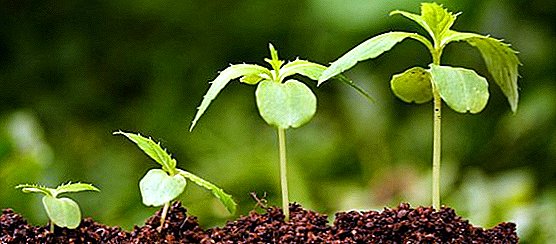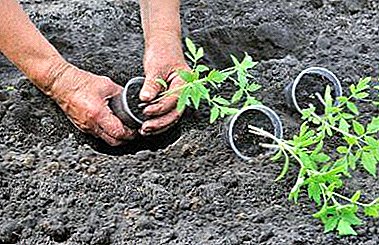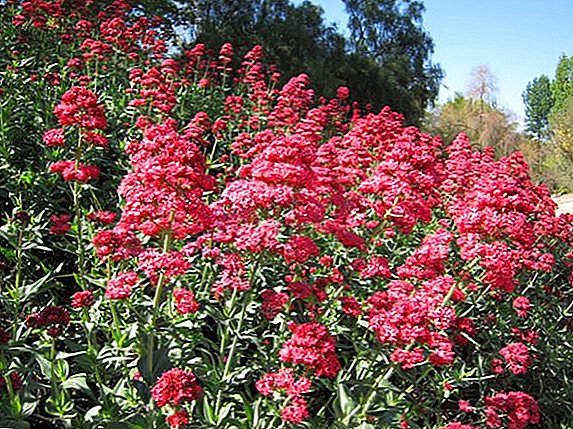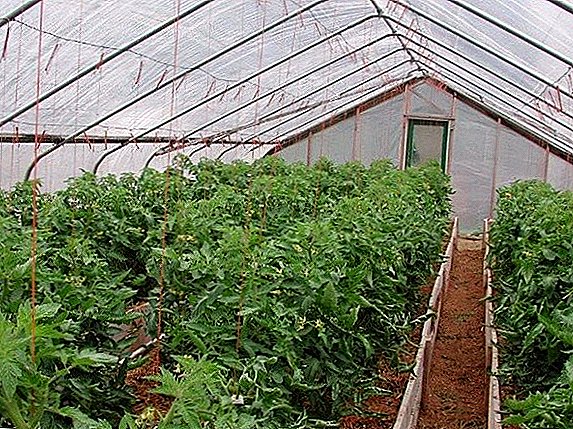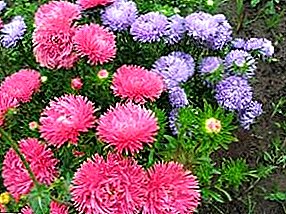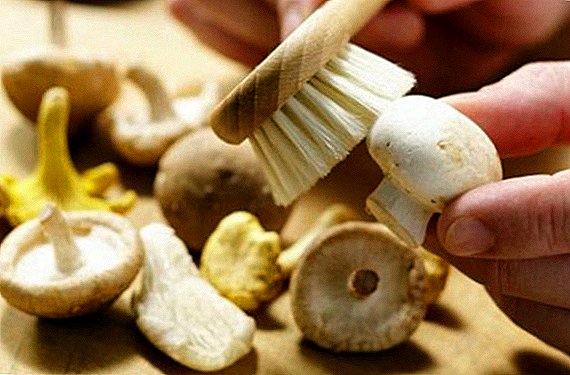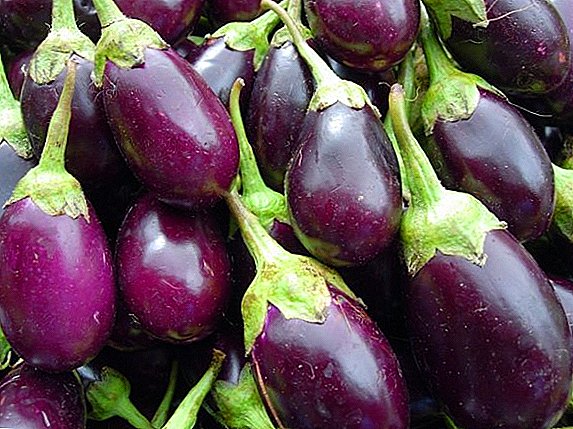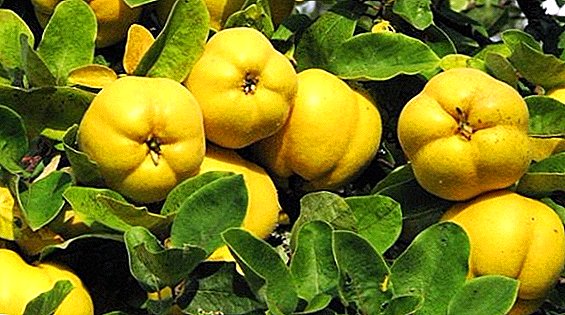 On sale are often found large fragrant hard fruits, like apples or pears, called "quince". It has many beneficial properties, but for the maximum positive effect of the plant it is necessary to provide good conditions for growth and development. Let's try to figure out what a quince is and how to properly care for it.
On sale are often found large fragrant hard fruits, like apples or pears, called "quince". It has many beneficial properties, but for the maximum positive effect of the plant it is necessary to provide good conditions for growth and development. Let's try to figure out what a quince is and how to properly care for it.
In fact, it is very similar to an apple tree and a pear, as it belongs to the same family with them - rosaceous. However, quince is a separate genus of plants, which includes several species. In gardening, the most popular are quince and large-fruited.
Did you know? Quince contains many nutrients: vitamins C, E, B1, B2, B6, PP, carotene, pectin, salts of potassium, phosphorus, iron and copper, and has anti-inflammatory, stimulating and astringent properties. It is also called the "golden apple".
How to grow a quince in the country, the choice of location
 Quince ordinary - a southern plant, but it is quite hardy and unpretentious when grown. The place where the quince will grow should be well lit and protected from drafts, otherwise you can not wait for a good harvest. It is better to plant a quince in the middle of the garden, but at the same time neighboring trees should be at a distance of no closer than 2 m, so as not to block the sun.
Quince ordinary - a southern plant, but it is quite hardy and unpretentious when grown. The place where the quince will grow should be well lit and protected from drafts, otherwise you can not wait for a good harvest. It is better to plant a quince in the middle of the garden, but at the same time neighboring trees should be at a distance of no closer than 2 m, so as not to block the sun.
Important! Cross-pollination contributes to a better yield of quince. To do this, at least one fruit tree of this family should grow on the plot: another quince, apple or pear tree.
What should be the ground for quince
The quince has a superficial root system, therefore it prefers loamy nutritious soil. Quince will also grow on lighter sandy soils, but the harvest will be noticeably worse. It can be successfully grown in areas where groundwater is located no closer than one meter from the surface.
What should be the lighting, temperature and humidity
Knowing how to grow a quince in your summer cottage, you can get a good harvest of healthy fruits. So, it needs a lot of light, but it is undemanding to humidity. This is a heat-loving plant, so it is good if the average annual daily temperature will exceed + 9 ° C.
What you need to know when planting quince
For successful cultivation of quince must observe the rules of planting and subsequent maintenance.
Soil preparation
Quince seedlings can be planted in early spring or autumn in a prepared pit with a depth of about 40 cm and a width of 60-80 cm, at the bottom of which a small layer of clay is placed. A few days before planting, you need to mix organic and mineral fertilizers, for example, 50 g of wood ash and 150 g of superphosphate with the soil and fill the planting hole with this mixture. If the soil is acidic, you can add a little lime.

How to plant a quince
When planting a quince, remove some soil from the planting pit, place a seedling in the pit, spread its roots in a horizontal position and cover it with removed soil. When planting a seedling, make sure that the root neck is at ground level. Soil around the seedling a little tamp, not touching the root of the neck. Form a near-stem circle for water retention by sprinkling an earthen shaft 5–7 cm high around the crown perimeter. Then pour the seedling with 30–40 liters of water and, when the water is absorbed, sprinkle with dry earth and grind with peat or dry leaves. For better development of the roots, the branches of the seedling can be shortened by 1/3 - 1/2 length, depending on their size. Cut need to 1-2 cm above the kidney. If there are leaves on the seedling, half of them must also be removed.
Top dressing and watering of a quince on the seasonal dacha
On abundant watering quince responds to increasing yields. Therefore, during the growing season, the plants need to be watered well at least three times: before beginning flowering, for better ovary, in June for the development of tree and fruit, at the end of summer for pouring fruit. At least one liter of water should be used for one irrigation, and for a large tree - up to 800 l, in order to moisten the whole tree trunk well.
 The quince ordinary is also favorable to fertilizers and top dressings. In the spring, when loosening the soil, the nitrogen fertilizers of 25-30 g per 1m² or complex mineral fertilizers of 50 g per tree are applied along the stern circle. If it was not possible to fertilize the quince in the spring, then up to half of the summer you can feed nitrogen fertilizer by diluting 10 g of fertilizer with 10 liters of water (per well dug around the perimeter of the crown). You can also feed the tree with a slurry solution diluted in 5-10 parts of water.
The quince ordinary is also favorable to fertilizers and top dressings. In the spring, when loosening the soil, the nitrogen fertilizers of 25-30 g per 1m² or complex mineral fertilizers of 50 g per tree are applied along the stern circle. If it was not possible to fertilize the quince in the spring, then up to half of the summer you can feed nitrogen fertilizer by diluting 10 g of fertilizer with 10 liters of water (per well dug around the perimeter of the crown). You can also feed the tree with a slurry solution diluted in 5-10 parts of water.
After feeding, quince should be watered abundantly so that fertilizer is evenly distributed. In the fall, apply potash, phosphate fertilizers of 20 g per 1m² and organic fertilizer in the form of mulch over the tree trunk, then dig up the earth on a half-bayonet spade. Together with autumn and winter precipitation, these fertilizers will gradually penetrate into the soil and feed the quince.
Help in the first years of life, how to tie a quince
You can buy seedlings on which the quince is grafted to the mother plant and will grow in the shape of a tree, although most often it grows with a bush.
Important! When buying quince seedlings, be careful. Breeders cultivate varieties for use as a stock for other varieties of quince and pear. This quince will have small fruits and low yields. It differs from the large-fruited smaller leaves.
In order for the quince shrub at your cottage to have a beautiful vertical shape, it must be tied up when planted. The support is installed at the bottom of the pit, in which a quince is planted, and must be 1–1.5 m higher than the branches of the seedling. It is necessary to tie all the branches to the support, so that a small gap remains between them. As the seedling grows, the mounts should be moved higher so that the quince will not bend over or break. When the seedling is strong and begins to bear fruit, the support is removed.
Features pruning quince how to perform correctly
 With the onset of autumn, the plant does not shed the foliage for a very long time, so pruning quinces is best done in early spring, before bud break. Remove need all damaged and frozen branches. Also, for a good harvest, you should shorten the growth of last year - branches up to 50 cm by 1/3, longer ones by 1/2, while vertically growing branches are necessarily shortened. It is also necessary to ensure that the middle of the crown is not thickened and well lit, for which purpose the extra branches are completely removed.
With the onset of autumn, the plant does not shed the foliage for a very long time, so pruning quinces is best done in early spring, before bud break. Remove need all damaged and frozen branches. Also, for a good harvest, you should shorten the growth of last year - branches up to 50 cm by 1/3, longer ones by 1/2, while vertically growing branches are necessarily shortened. It is also necessary to ensure that the middle of the crown is not thickened and well lit, for which purpose the extra branches are completely removed.
Important! With intensive pruning a large number of fruits can be tied, which, due to heavy loads, will not be large.
Quince breeding
It is quite easy to propagate a quince, and this can be done in different ways. The easiest is reproduction by cuttings and root shoots. Cuttings for planting are cut in the spring when the leaves are already in full bloom. Annual cuttings are ideal for the role of planting material, preferably from the lower branches of the tree, which can be specially left at pruning. For planting on the handle should be 5-6 buds (the lower cut is done immediately under the kidney, and the upper one - at a distance of 2-3 cm from the upper kidney, so that when the cuttings dry, the kidney remains alive). The leaves on the handle are completely removed.
Cuttings deepen into about 2–3 buds prepared in the excavated land. To make the survival rate of the cuttings higher, you can cover them up with a film by building a small greenhouse. After 20 days, the cuttings will take root and in the fall they can be transplanted to a permanent place.
 Root growth is cut with a small piece of bark, so that the root remains intact. It is possible to carry out this procedure both in spring and in autumn, and when planting at a sapling, the central root is often shortened so that the lateral side started to develop faster and the leaves are removed (except for the uppermost ones). For such seedlings need a little shadow.
Root growth is cut with a small piece of bark, so that the root remains intact. It is possible to carry out this procedure both in spring and in autumn, and when planting at a sapling, the central root is often shortened so that the lateral side started to develop faster and the leaves are removed (except for the uppermost ones). For such seedlings need a little shadow.
For reproduction by layering, in the autumn, it is necessary to bend down the lower branches, and cut the bark, cover with earth. In the spring, roots are formed at the places of incision of the bark, and in the fall, the layers are separated from the mother plant and planted separately. Quince does not reproduce badly with the help of vaccination. Good varietal cuttings can be grafted onto already growing trees in spring, when intensive sap flow begins. Quince seedlings are planted on the annual seedlings with a bud (eye), and this method of vaccination can be carried out in the summer in July-August.
Did you know? As a stock for quince breeders use not only other types of quince, but also mountain ash and hawthorn..
 Seed propagation is the longest quince growing process. During propagation by seeds, the varietal characteristics of the quince may not be preserved; however, such seedlings have a well-developed root system and grow quickly, so they are often grown as a stock for varietal cuttings.
Seed propagation is the longest quince growing process. During propagation by seeds, the varietal characteristics of the quince may not be preserved; however, such seedlings have a well-developed root system and grow quickly, so they are often grown as a stock for varietal cuttings.
Seeds for planting need to collect from ripe fruit, wash well from mucus and dry. Before direct planting, they are stratified for 2-3 months. In autumn, the seeds can already be sown in open ground, then the stratification will be natural and sprouts will appear in the spring. Moreover, seeds can be laid on stratification in early February and at the end of April also sown in open ground.
During the period of growth of seedlings they need to replant twice: plants that have two true leaves are spiked for the first time (they are planted at a distance of 5 cm from each other), the second time it is necessary to transplant seedlings about a month after the first planting (at a distance of 17-20 cm). In the second year of the growing season, they can be planted in a permanent place or used as a stock.
Important! Quince grown from seeds, will bear fruit much later reproduction vegetatively.
Quince: harvest and storage
The fruits of the quince ordinary all summer almost do not grow and begin to fill only in late August. They are not afraid of frosts, so they need to harvest in late October, allowing them to mature well. For long-term storage of the harvest, the quince is harvested by hand, cutting or removing the fruit, preventing them from falling.
 The quince is stored all winter at a temperature of -2 ... -5 ° С. In autumn, quince fruits are very firm, low-juicy, tart, with a sweetish taste. Fresh, they are not consumed as food, but very tasty and fragrant jams, preserves, compotes, and marmalade are made. Pieces of quince can also be put in the tea instead of lemon. During storage, fruits become more juicy, soft and sweet.
The quince is stored all winter at a temperature of -2 ... -5 ° С. In autumn, quince fruits are very firm, low-juicy, tart, with a sweetish taste. Fresh, they are not consumed as food, but very tasty and fragrant jams, preserves, compotes, and marmalade are made. Pieces of quince can also be put in the tea instead of lemon. During storage, fruits become more juicy, soft and sweet.
Did you know? The word marmalade in Portuguese "marmelo" means "quince puree".
Quince - the perfect tree for your garden. It is not only useful, but also very decorative: its foliage is not susceptible to diseases and remains beautiful all summer, and in the fall it gets a bright yellow color and late fall. This plant is also a good honey plant.


